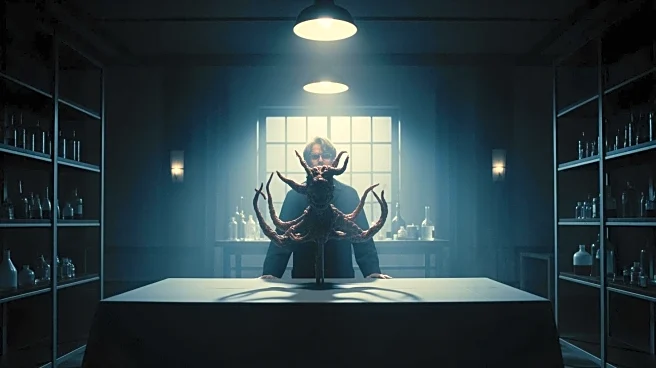What's Happening?
Guillermo del Toro's adaptation of 'Frankenstein' is set to be released as a hardcover book by Insight Editions. The book will feature the screenplay, a foreword by del Toro, concept art, film stills,
and behind-the-scenes photography. This release follows the film's limited theatrical run and its upcoming availability on Netflix starting November 7. The film has already garnered awards, including the Gotham Awards’ Vanguard Tribute and the Graffetta d’Oro for Best Film at the Venice International Film Festival. The book aims to provide an immersive experience for fans of both the original novel and del Toro's cinematic interpretation.
Why It's Important?
The release of the 'Frankenstein' screenplay as a book is significant as it represents a strategic move by Netflix to replicate the success of del Toro's previous work, 'Pinocchio,' which won several awards. By offering the screenplay in book form, Netflix and Insight Editions are expanding the film's reach to literary audiences and fans of del Toro's unique artistic style. This approach not only enhances the film's visibility but also caters to a niche market interested in the creative process behind cinematic adaptations. The initiative could influence how streaming platforms and filmmakers engage with audiences beyond traditional viewing experiences.
What's Next?
The hardcover book of 'Frankenstein' will be available for purchase starting November 25, priced at $30. As the film becomes available on Netflix, it is expected to attract a wider audience, potentially increasing its chances for further awards recognition. The release strategy may prompt other filmmakers and streaming services to consider similar approaches to maximize audience engagement and award potential. Fans of del Toro and the original novel can anticipate a comprehensive exploration of the film's artistic elements through the book.
Beyond the Headlines
The decision to release the screenplay as a book highlights the growing trend of multimedia storytelling, where films are complemented by additional content to enrich the audience's experience. This approach not only serves as a marketing tool but also contributes to the preservation of cinematic art in a tangible form. It underscores the importance of cross-medium collaborations in the entertainment industry, offering insights into the creative process and fostering a deeper appreciation for the art of filmmaking.











